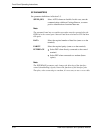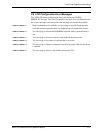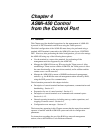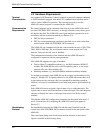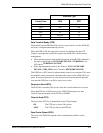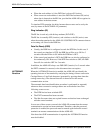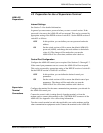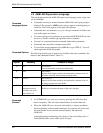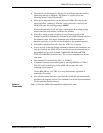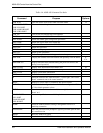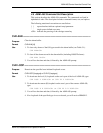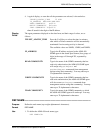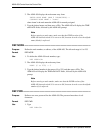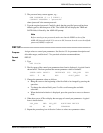
ASMi-450 Control from the Control Port
4-6 ASMi-450 Installation and Operation Manual
4.4 ASMi-450 Supervision Language
This paragraph presents the ASMi-450 supervision language syntax, usage, and
set of commands.
Command
Language Syntax
• Commands can only be entered when the ASMi-450 control port prompt is
displayed. The prompt is ASMI>, and it always appears at the beginning of
a new line. The cursor appears to the right of the prompt.
• Commands are case-insensitive, e.g. you can type commands in either lower
case and/or upper case letters.
• To correct typing errors, backspace by pressing the BACKSPACE key until
the error is cleared, and then type again the correct command.
• Use space as a separator between command fields and/or parameters.
• Commands must end with a carriage return <CR>.
• To cancel the current command, press BREAK or type CTRL-C. You will
obtain again the ASMi-450 prompt.
Command Options
The following general types of options are available with some commands. See
details in the command set index, Table 4-1.
Option Meaning Example of Usage
/A All CLR ALM /A
Clears all the alarms stored by the alarm buffer
/C Clear DSP ALM /C
Displays all the alarms stored by the alarm buffer, and then clears all
the alarms in the ON state stored by the alarm buffer
/CA Clear all DSP ALM /CA
Displays all the alarms stored by the alarm buffer, and then clears all
the alarms stored by the alarm buffer
/R Repeat automatically
command execution.
Available only when
node address is 0
DSP ST PORT /R
Enables you to monitor the status of the user's data port.
Command
Protocol
• If AUTOBAUD is on, start any session by pressing the <CR> key three
times in sequence. This will ensure identification of terminal data rate.
• When the ASMi-450 uses a non-zero node address, it expects an address
before responding to the terminal commands. No response will occur until
the node number is received and acknowledged by the addressed
ASMi-450.
Acknowledgment is indicated by the echoing of the node address part, i.e.
Node<SP>nnn<SP>, where <SP> stands for space.



